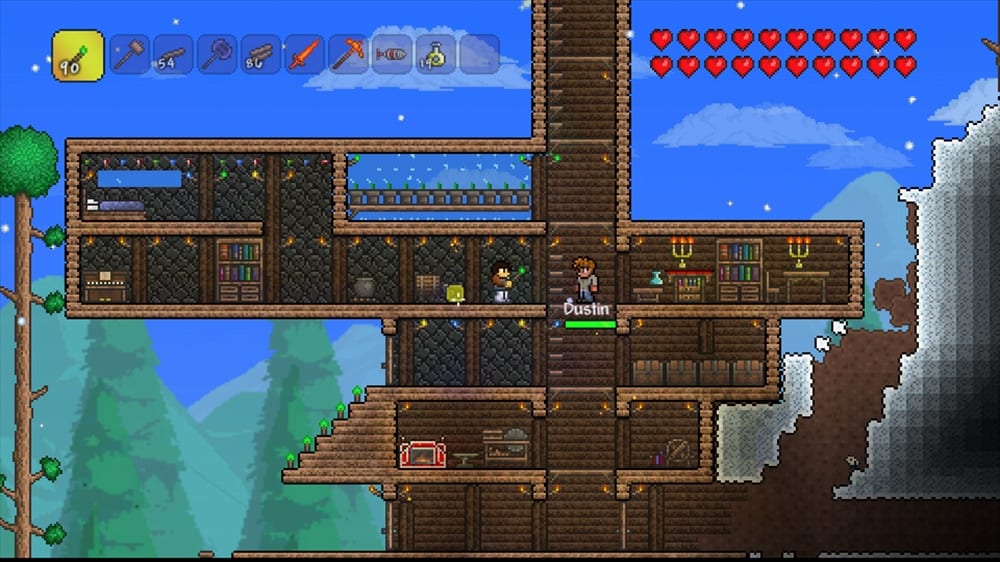Review: Terraria

When it was originally released for PC in May 2011, no-one could have predicted how successful Terraria would go on to be. Within a week, the indie game sold 200,000 copies, topping the Steam chart ahead of The Witcher 2 and Portal 2. Fast forward to March 2013 and the title has arrived on the Xbox Live Arcade.
Created by independent game studio Re-Logic, Terraria is an action-adventure and role-playing game, in which players explore, craft, construct and combat enemies in a randomly-generated 2D world.
In traditional role-playing game style, players begin by customising their character. While this simply consists of choosing the gender and hairstyle, as well as eye and clothes colour of the protagonist, it’s a nice, welcoming touch to the title.
Depending on the size of the world, as selected by players at the beginning of their adventure, exploration is a key aspect in Terraria. In a similar fashion to Minecraft, discovering new items, as well as harvesting and mining materials from the environments, allows players to increase their attack and defence against enemies, and therefore progress through the game.
Players use three main tools: a pickaxe, axe and hammer. Each one serves a different purpose and, like weapons, which include spears, bow and guns, can be upgraded through crafting – another important aspect of Terraria. Gathered resources can be crafted into different items with further options available with the help of a work bench.
The game contains a day and night cycle, with different enemies appearing during the different time of the day. Slime, the game’s weakest enemy, roams the world during light periods, while the likes of Zombies, Skeletons and Demon Eyes come alive at night. There’s a great range and diversity of enemies, which have been well implemented into the game. In addition, a number of bosses are scattered throughout, each one providing players with a different challenge.
However, Terraria isn’t a direct port of the PC version as a new control system has been implemented. To make up for the lack of keyboard and mouse, players can use the auto-cursor, which allows players to freely dig or build with precision.
In addition, there’s a range of new items available and Terraria offers support for up to eight players over Xbox Live, with options for local split-screen also available. Multiplayer is where the game really comes to life, as gamers are able to work together to gather materials and defeat enemies – co-operative play at its best.
Graphically, this isn’t a title that will bring out the best of your swanky high-definition television, though the 2D pixel style is easy on the eye. Similarly, the audio in the game isn’t going to win any awards, but players will be singing the game’s soundtrack in their sleep.
Initially, Terraria is tedious and many players will be put off by the slow-pace and the constant dying at the beginning of the game. However, with a little persistence, this is an enjoyable title with depth.
While the 1,200 Microsoft Points price tag may be off-putting to some gamers, its unlimited replayability factor is something that should not be ignored. You’ll still be discovering something new in Terrari, even after 40 hours of playing.
[Originally posted on Console Monster]